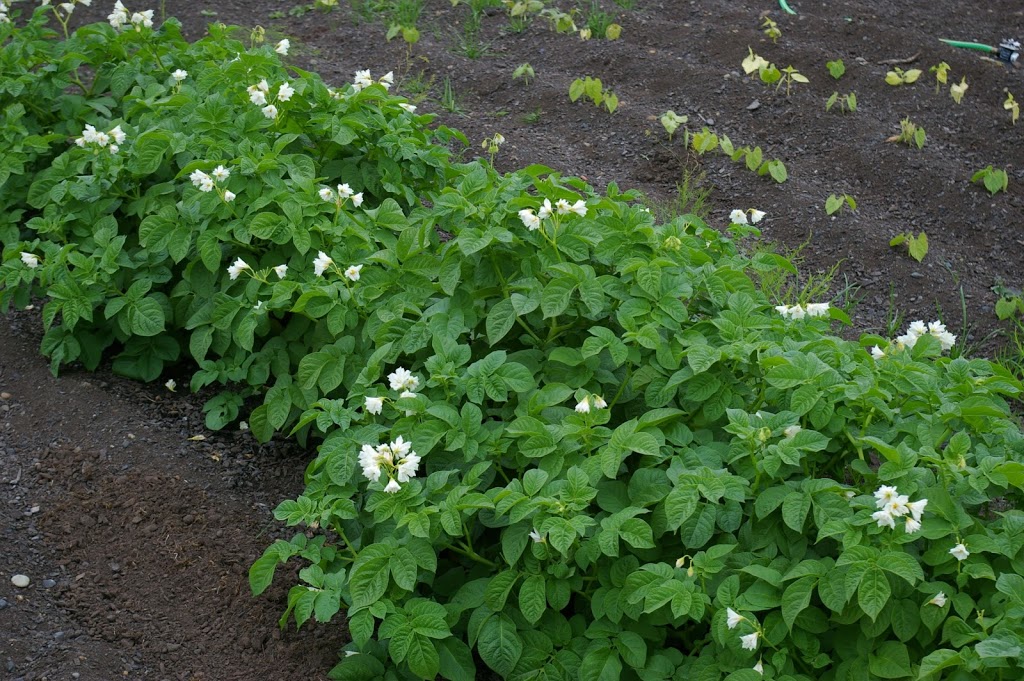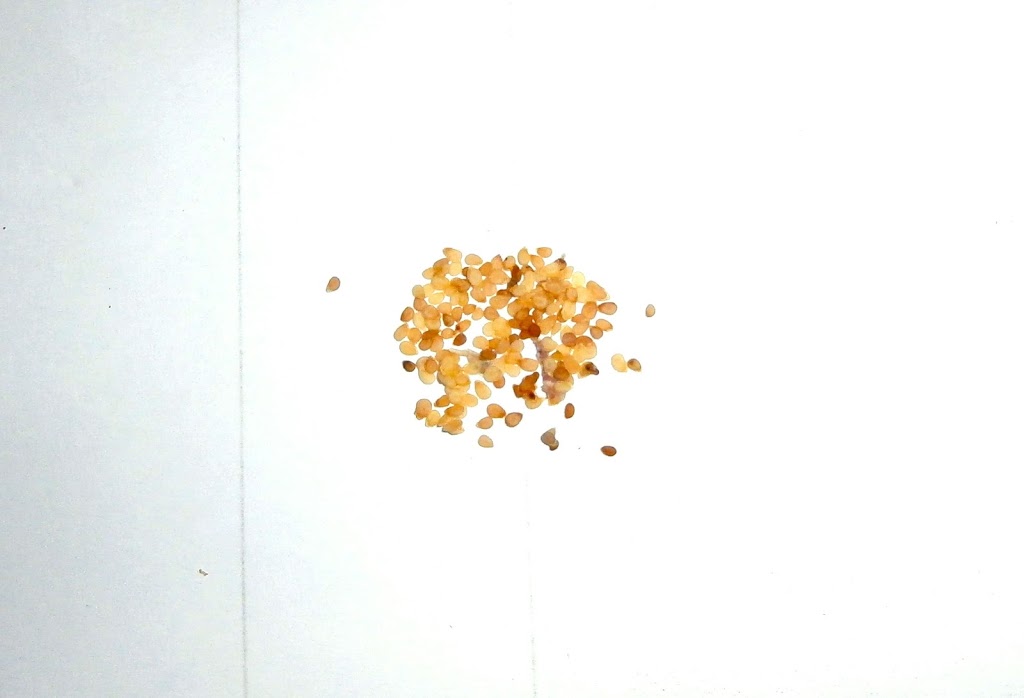No products in the cart.
Blog, potato (Solanum tuberosum)
Potatoes: Growing from Seed (Part 1)
Most people grow potatoes from so called “seed potatoes,” which are simply small potatoes or large potatoes cut into pieces. This method has advantages and disadvantages. One advantage is that it is relatively foolproof if you start with healthy potatoes. Compared to a seed, even a small piece of potato has huge reserves of energy and can sprout into a vigorous plant even under less than ideal conditions. Another, more significant, advantage is that potato tubers are clones; plants grown from the same line of potatoes will produce more potatoes with the exact same characteristics.
Of course, there are disadvantages as well. Tubers don’t undergo the generational break that occurs when alternating between somatic cells and germ cells. This means that, once a potato is infected with a disease, there is no way to cure it without human intervention. This is why people buy expensive “certified” seed potatoes. These potatoes are grown from plants produced in laboratories by meristem culture, a method of growing that eliminates disease. You can do this at home pretty easily if you’ve done some undergraduate lab science, but it is more than most people want to take on (and, of course, it is much more cost effective for a small scale gardener to buy certified seed potatoes than to equip a small lab).
 |
| Potatoes flowering and beginning to form berries |
Potatoes are also much more complicated to store than seeds. They are bulky, they require some temperature and humidity control, and they are vulnerable to pests. You can easily lose an entire crop of seed potatoes over a winter if your storage facility fails, rats invade, or, more common historically, you were forced to eat your seed potatoes in order to survive until spring.
Potatoes also produce botanical, or true, seeds. Many people have grown potatoes without ever seeing a true potato seed, because sexual reproduction has not been a selection criterion for modern varieties. A few still produce seed reliably, but most produce little or no seed. This is a shame, because it limits our ability to use sexual reproduction to produce new potato varieties, to break the chain of disease formed by clonal reproduction, and to have a durable and long-lived source of new potato plants.
So, we find ourselves in the kind of compartmentalized and specialized situation at which our modern civilization excels. Breeders use true seed, growers use tubers, and a relatively high tech group of middle-men facilitate. This pattern is found throughout the food industry, where there is a considerable disconnect between the breeders of cultivars and their consumers. This is good for group efficiency, but bad for self-sufficiency.
 |
| Enough true potato seed for 100 row feet |
We produce yields of about 14 to 18 pounds per ten row feet, requiring 1 pound of seed potatoes. To produce our target of 1000 pounds of potatoes, we required about 65 pounds of seed potatoes, which ran about $100 per year. We didn’t have to spend that much every year, since we save our own seed potatoes for a few years before the disease burden becomes too great. But, there is some risk to that.
On the other hand, in 2008 and 2009, I harvested six pounds of potato berries. The seed yield from those berries produced enough seed to last me for decades and it is still germinating at better than 70%. In my earliest experiments a few years earlier, I wasn’t too impressed with the results that I got growing from seed, but that is because I didn’t know what I was doing. I grew them along-side my normal tuber crop and, somewhat unreasonably, expected them to produce the same kinds of yields in the same period. Of course, the tubers have a huge head start, so this is not really a valid comparison. I have since learned how to get better results when growing potatoes from seed and I am confident that I could produce a respectable crop from even just a few grams of seed.
Since 2006, I increased my planting from TPS each year, to the point that I no longer grow any commercial varieties from seed tubers and I am pretty pleased with the results. In the next part of this post, I will lay out my strategy for using true potato seed to produce better adapted potatoes, to break the chain of disease, and to save some money and improve our self-sufficiency along the way.
